|
Return to Menu
Interview with Collin Andrew, Photojournalist
From time to time we feature interviews with young media artists. This week we visit with Collin Andrew, photojournalist. Collin combines work in the photojournalism while completing his college degree. Here is his story in his words and images.
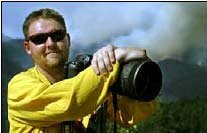 |
PR: How did you discover photography as a passion? How did it become a part of your life? Were there certain experiences early on that facilitated a growing interest in this medium?
CA: I have always been into art. My father’s side of the family has been quite creative, especially my grandmother who is a nationally known quilter. Much of my life was spent with me trying to be creative, trying to find my niche.
|
I have always been a hands-on person. Drawing, painting, clay, airbrush, you name it. For some reason I spent very little time with a camera.
Fresh out of high school I was absolutely clueless about what I wanted to do. I spent about 98% of my time skateboarding. The other 2% was spent getting into trouble! My parents might beg to differ about that 2%! But I’m studying journalism so I’m all about the facts…I’m sticking with the 2%, for now!
It was while I was dating my future wife that I learned her father was a photojournalist. One day he handed me a camera and said, “Give it a whirl, take a few frames.” I was hooked; there was no going back for me. I fully engrossed myself in photography. My thoughts were all about pictures. To this day, everything I look at I think, sometimes out loud, how can I make a good photograph of it. For me, life is about telling stories with pictures.
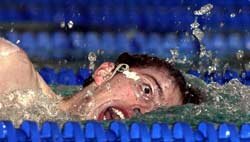
PR: When was it that you said, yes, I want to be a professional photographer? What were the circumstances?
CA: I was assisting The Register-Guard’s Brian Davies, and Thomas Boyd at a night football game at Rieser Stadium in Corvallis. I was running compact flash cards from the boys on the field to the editors in the press box. I thought to my self, "Wow this is absolutely incredible. To think that someone can make a living doing some thing that they love to do!" To me everything about taking pictures seemed to make sense that night.
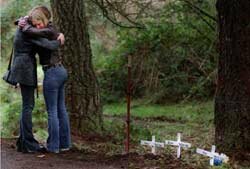
PR: Why photography? What is it about this medium that is important? What should others know about the power of photography to communicate?
CA: A photograph, appropriately, or inappropriately, affects the viewer. We are seeing this first hand in the media today. Just look at the influence the photographs from Abu Ghraib prison or of Nick Berg, or Paul Johnson, have on shaping public opinion. Photography shows the world what’s going on. It informs. God bless it!
For me, as a Photojournalist, altering an image is an unethical practice. I don't manipulate the scene. If I don’t get the picture I want, or if it’s "almost that perfect picture", no matter what, I just leave it.
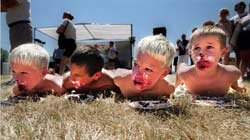
Learn from mistakes and try to get it the way you want it the next time. Don’t mislead the audience!
PR: How have you been preparing for a professional career as a photographer? Are you undertaking a major in photography or related field?
CA: I’m just hitting the books. Getting through it one step at a time I’m not currently taking any photography classes, although in the future I’m sure I will. I just take every day with ease and work on my ability to tell stories, maybe each time doing a little bit better than the last. I plan to attend Oregon State University in the fall along with courses at the University of Oregon.
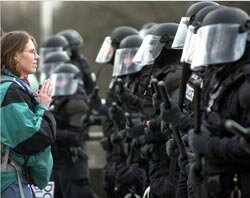
PR: Have there been certain classes or experiences that have helped you understand the medium of photography?
CA: I have spent the past few years as an understudy to Carl Davaz. Davaz, a local photojournalist, started his career at The Topeka Journal in Topeka, Kansas. Later he was the photo director at The Missoulian and at The Register-Guard. Everything I know I owe to this gracious and talented man.
I think the way that I try to really understand the medium is to think less about f-stops and more about listening and interacting with the subject I want to photograph. It’s important to remember that people are just like you and me. No one likes a camera shoved into his or her face. If you are subtle, and don’t come upon someone like some crazy gear carrying photographer, you will find success.
Putting down the camera is just as important as taking the picture. What I mean is that approaching some one without a camera, and just listening to their story can often facilitate your getting the picture that you really want.
The appropriate use of f-stop’s, ambient light, and strobes, will all come with time and experimentation. I’m never afraid to try new things, even if they don’t work. Every now and it pays off.
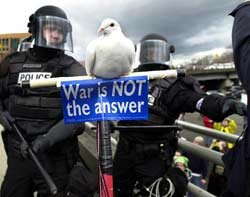
PR: You had an internship at the Eugene based Register Guard newspaper. Could you tell us about that experience? How did it come about? What were your tasks? What did you learn about photojournalism?
CA: Oh boy, where to start. It’s back to the having faith thing again. The only way that you can have an internship at the Guard is to have a previous one under your belt. I was fortunate enough to have the Photo editor at the Springfield News offer me an internship while I was working as the photo editor at the Torch, a student run newspaper at Lane Community College.
Unfortunately, before I could obtain an internship, the economy took a turn for the worst during post 9/11, and the Register-Guard was no exception. The paper made a very hard decision to withhold their photography internship indefinitely.
Although I could not get an internship, I was freelancing for the papers about a year when an opportunity presented itself.
It was the fourth of July 2003 and the Butte to Butte race was in full swing. Register-Guard photographer Wayne Eastburn was on the scene, but not for long. A runner crossing the finish line hit Eastburn. He fell to the ground and broke his hip. The paper needed someone to fill the gap, and fill it fast. My internship was a freak accident you might say.
If I had gone head to head with some of the best college photographers in the nation for this internship, it would have never happened. However, the staff at the newspaper knew that I was able to shoot pictures and that I had an understanding of how to do the job having had an internship at the Springfield News.
It turned out to be the most exciting job I have ever had, hands down. I was treated just like staff, attending meetings, having to find wild art on the days that a feel-good story was needed, and I was given the opportunity to work on long-term stories as well.
I worked hard to prove myself. It was about a month into the job that Thomas Boyd (RG staff photographer) pulled me aside while I was processing my film (yes, they still shoot film). Boyd said that I had exceeded his expectations, and to keep up the good work. My mind was at ease.
During my six-month stint as a photojournalist at The Register-Guard, I began working on my portfolio for another possible internship for summer, 2004.
It was a couple of months later, after sending out 15 PDF Portfolio CD's and hearing nothing, that I received the first of three phone calls and an e-mail from some of the papers to which I had applied. In the end, I was number two at the Colorado Gazette-times, and number six at the Seattle Times. To me this is great; the first time I have ever handed out a portfolio I had a number two and number six at the Times! I was jazzed, but still internshipless.
I was later offered an internship at The Winston-Salem Journal, a 90,000-circulation daily in North Carolina. I was also offered another at The Reno Gazette-Journal, a 68,000 circulation Pulitzer Prize winning daily in Reno Nevada. Alas, I held out and opted to decline both and stay close to home for now. However, come next summer you better believe that I will be in full swing for another internship. Let’s hope.
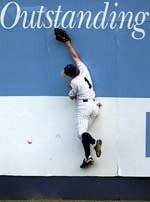
PR: Where next? What do you hope to be doing within the next few years? Is there a certain area within the field of photography on which you to concentrate such a photojournalism, documentary, entertainment, etc.
CA: It’s all photojournalism and documentary work for now. I plan to graduate in 2006 and get on with my passion for newspapers and provide support and security for my family. Who knows where I’ll end up in the end? As long as I do the best job I can do and listen when the time is right, I’ll do ok.
PR: You have a very handsome web site portfolio. Could you tell us a bit how you went about designing it and how you came to choose the PDF as a delivery tool?
CA: Early on, when I was just learning how to build a website, I found myself spending more time cross-platforming then anything else, even with CSS (cascading style sheets).
When it was time to build my current portfolio I wanted to have total control of the look no matter what computer is used for viewing. The only logical way was to create a PDF formatted file. This way, the portfolio will always look as I want it to. Links will be viewed the same way, images will keep their resolution, all the fonts that I have chosen are embedded in the file, even when the machine that downloads the file does not have them installed. The most important thing is the file size. It’s kept to a minimum.
What’s not to like about it! Well, there is one fallback. I formatted the file to open automatically upon download. Depending on the age of the users operating system I found that sometimes the file does not open in Adobe Acrobat as designed. Sometimes it opens in the users default web browser. I’ve only came across this problem in Microsoft Windows 98, and it’s not an all the time thing but enough to aggravate me. So, if anyone knows how to correct this problem please let me know… (My current portfolio was created in Indesign, and than exported as a PDF both for the web and a printed version too.)
PR: Thank you for your time and interest in participating in this interview.
CA: My pleasure…
|

